Exhibition review of 'The Recent' at Talbot Rice Gallery
WORDS BY OSCAR LUND
Oscar Lund is a journalist, designer and photographer based in Edinburgh @lund_archive
"the mind seemed to grow giddy by looking so far into the abyss of time" - John Playfair June 1788
Living in the present is almost an innate property of the human condition. We see the past through a fragmented lens of the photographs, artefacts, and writings left behind by those who lived before us. The future can be foggy, unpredictable, and uncertain. Although we can estimate what will happen and piece together what has, the time before and after our lives exist primarily outside of our direct experience.
The Recent at Edinburgh’s Talbot Rice Gallery pushes this temporal uncertainty to the extreme in both directions, forcing us to contemplate the dizzying vastness of Earth’s primordial history while simultaneously turning our attention to the precarious future of our planet’s ecosystems. From paintings and tapestries to geological records and dream testimonies, The Recent draws upon an eclectic range of mediums into a cohesive thematic whole.
Angelica Mesiti - The rain that fell in the faint light of the young Sun, 2022
Pigment print on cotton rag, dry mounted on aluminium, 5:1 surround sound
Angelica Mesiti
Future Perfect Continuous, 2022 - HD video, 16:9, black and white, surround sound, duration: 8 min
Other works evoke this idea of a symbiosis between nature and man such as Egle Budvytyte’s video production Songs from the Compost: Mutating Bodies, Imploding Stars (2022) depicting writhing bodies covered in fungus and lichen blurring the line between man and nature: “we have never been clean”. Budvytyte’s work presents humanity as a “crack in the rock”, a brief period of growth and abnormality sandwiched between eternities of dead stone. Budvytyte draws upon the idea of Deep Time, a view of the Earth’s history from a perspective outside of humanity’s proliferation that stretches across the planet’s 4.5-billion-year lifetime.
Upon entering the gallery, the viewer is met with two complementary pieces by Australian artist Angelica Mesiti: The Rain That Fell in the Faint Light of the Young Sun (2022) depicting a selection of pitted stone samples imprinted by rain that fell millions of years ago, geological samples of weather patterns that existed millions of years before the first human came into existence. Alongside, the Future Perfect Continuous (2022) rhythmic clapping simulates the sound of rainfall. This sets the tone for the exhibition, drawing together the very distant past and our human present into one symbiotic whole: whilst the rain imprinted upon the rocks has long passed, the clapping of Future Perfect Continuous pulls the rain back into the present.
As explained by American writer John Angus McPhee in his 1998 book Annuals of the Former World:
“Consider the Earth's history as the old measure of the English yard, the distance from the King's nose to the tip of his outstretched hand. One stroke of a nail file on his middle finger erases human history.” – 1998
Although much of the artworks on display in The Recent places an emphasis on man’s insignificance in the vast history of the Earth’s surface. Dorothy Cross’ Stalactite contrasts a young boy on the cusp of manhood with a 500,000-year-old Stalactite, other works shift this perspective forward.
Dorothy Cross - Stalactite, 2010
Single-channel HD video with sound, duration: 5 min 22 sec
Projected on the back of Cross’ Stalactite is Nicholas Mangan’s A World Undone. This piece features a super-slowed projection of the oldest known mineral, Zircon, being reduced to dust. Instead of seeing man as insignificant, it presents humanity as a fundamentally destructive force, drawing upon the geological concept of the Anthropocene. A geological era of the Earth, describing a period in the planet’s history scarred by human influence. In this regard, Mangan’s destruction of a 4-billion-year-old mineral represents humanity’s artificial impact on Earth’s geology. The placement of this work on the mirror side of Cross’ Stalactite intelligently shows us both sides of the coin: humanity is insignificant in the face of geological timescales whilst also being crucial in shaping the planet's future.
It is this paradox that lends itself well to the life’s work of French volcanologists Maurice and Katia Krafft. In one instance, the couple understood the concept of deep time, with Maurice having said:
“Our lives are just a blink compared to the lives of a volcano.”
However, in another, the couple dedicated their lives to cataloguing, documenting, and preserving thousands of samples, photographs, and hours of footage with the singular goal of understanding how the planet’s geology operated.
It is in this manner that The Recent reflects the incongruity of the Kraffts’ geologic work, an attempt to capture and preserve the functionally infinite stretch of the past in service to better understand our future.
Regina de Miguel Installation view, The Recent, Talbot Rice Gallery, 2023
Regina de Miguel - ‘Abrazo Simbionte’, 2022
Watercolour on paper
Commissioned by TBA21 Thyssen-Bornemisza Art Contemporary
No better is this expressed than through Regina de Miguel’s collection of mixed-media gouache paintings. Her topographical paintings serve as an act of preservation, detailing views of Pacific islands in danger of being swallowed by rising sea levels. Her work also heavily features imagery of biological nerves and tribal artefacts, emphasising the notion that people and their lands are almost biologically bound. The islands she depicts are not simply rocks that will come and go with the planet’s geological changes but are instead inextricably linked to the culture and life of a people. Miguel’s Nerve Bushes Like Coral Forests (2021) collection draws on spiritual imagery alongside that of the natural and biological, suggesting that our culture and religion are intertwined with our perceptions of the natural world. With the drastic changes in our natural world through climate change, our spiritual and cultural understandings of it will either change or disappear entirely, just as the Pacific islands she depicts will.
Micol Roubini -The Magic Mountain, 2023
4-channel video installation on a continuous, changing loop, stereo sound dialogue, duration: 25 min. Single-channel, silent video compilation of archival footage courtesy Ivan Cavalli. A1 poster. Full colour image on uncoated paper, including translated accounts of dreams.
The idea of environment as influential upon cultural memory is built upon by Micol Roubini’s The Magic Mountain (2023) which features several testimonies of people local to an abandoned asbestos mine in Balangero, Italy. Locals recount vivid dreams of “thick blackness”, “icy water”, and “a deep fear of disappearing”. Mirroring the warnings of Miguel’s paintings, The Magic Mountain draws upon the powerful impact that the environment has on the collective memory of a community.
The Recent draws aesthetics and history of geology to masterfully present man’s temporal insignificance compared to the deep time scale, forcing us to confront its incomprehensible scale through fragments of the past. At the same time, it makes us question our impact on the earth. How can this planet that breaks and remakes itself over such unfathomably long stretches be so suddenly and violently scarred by our actions? It serves as a call for action to not only preserve the natural beauty of our planet but also the cultures and mythologies that stem from it.
Otobong Nkanga - Tied to the Other Side, 2021 Woven textile
This review has touched upon a few artists featured in the exhibition but there are many more that have not been mentioned that are worthy of attention, especially Otobong Nkanga’s wonderful tapestry piece, Tied to the Other Side (2021). The exhibition’s featured works have been curated well in service to an overall theme and whilst some may suffer when viewed outside of this curational context, many stand on their own as deeply compelling pieces.
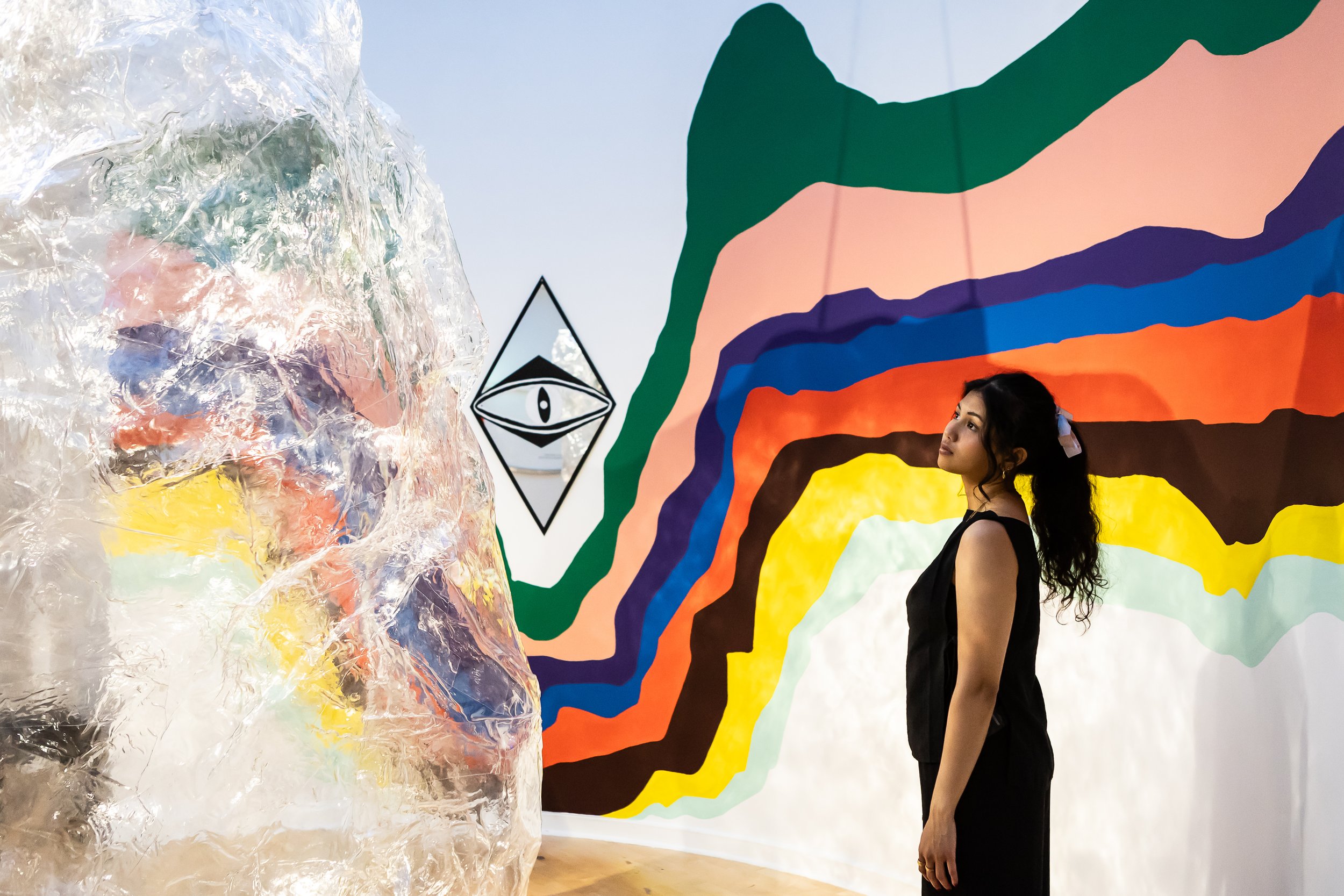
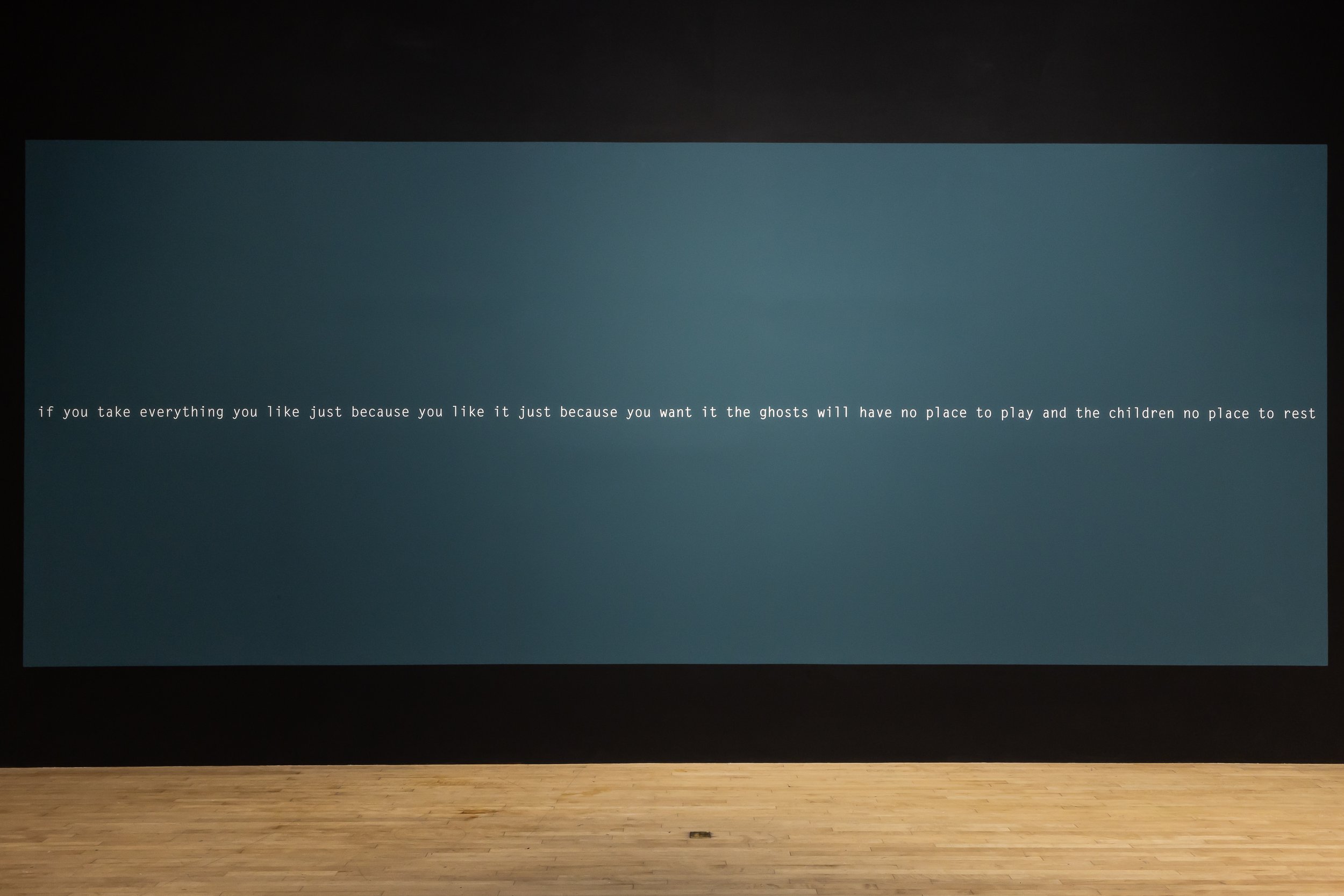
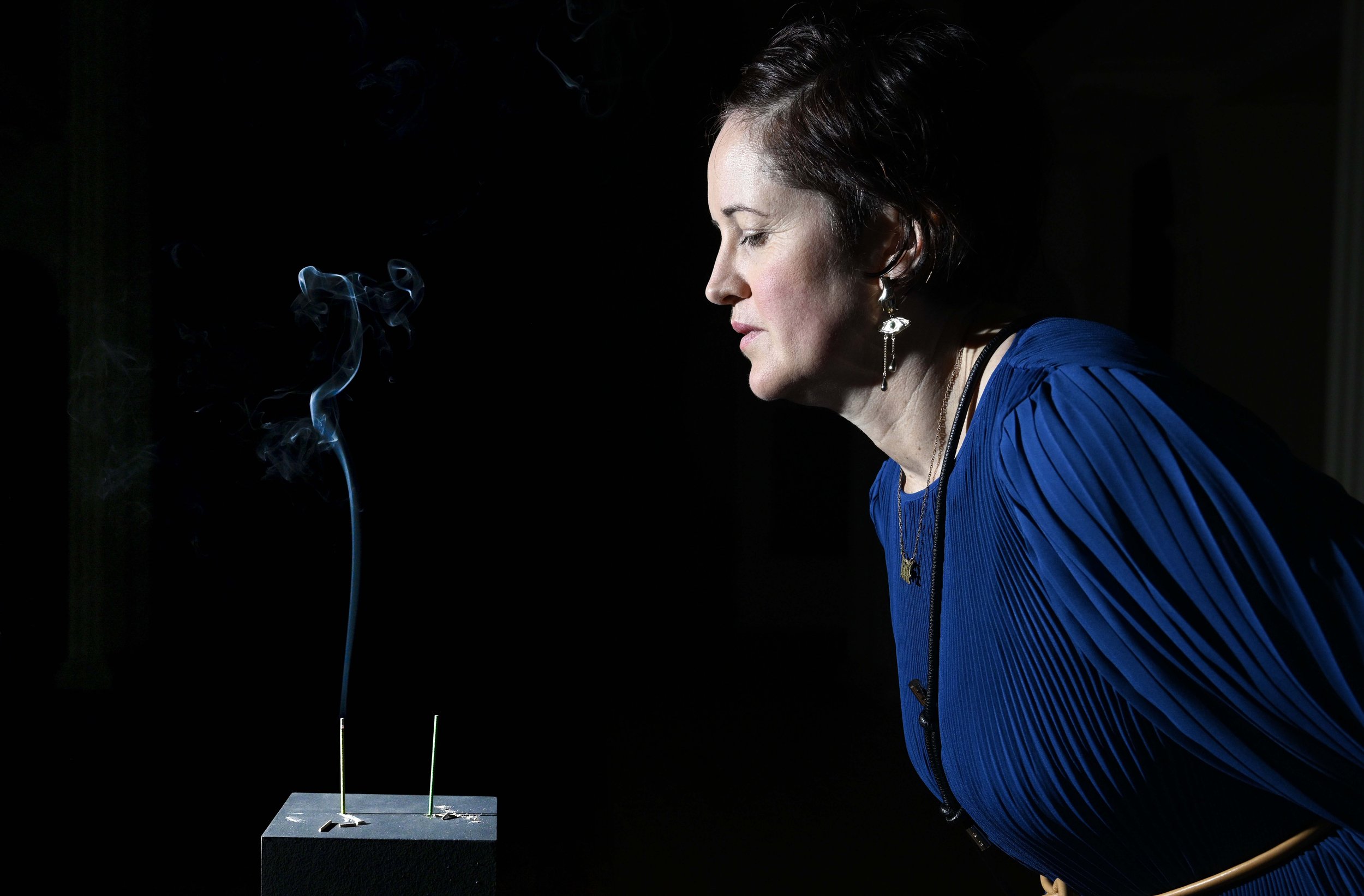
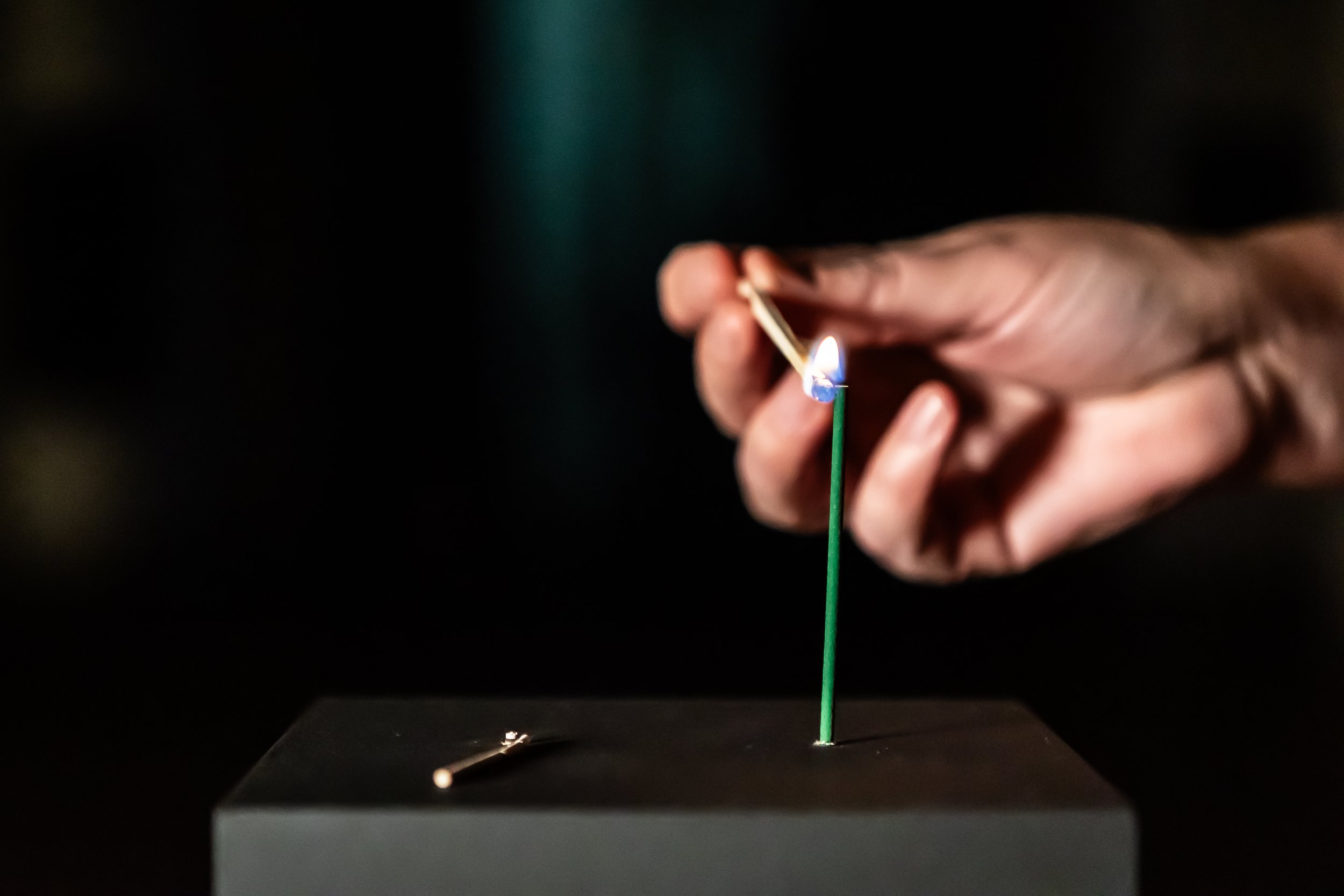
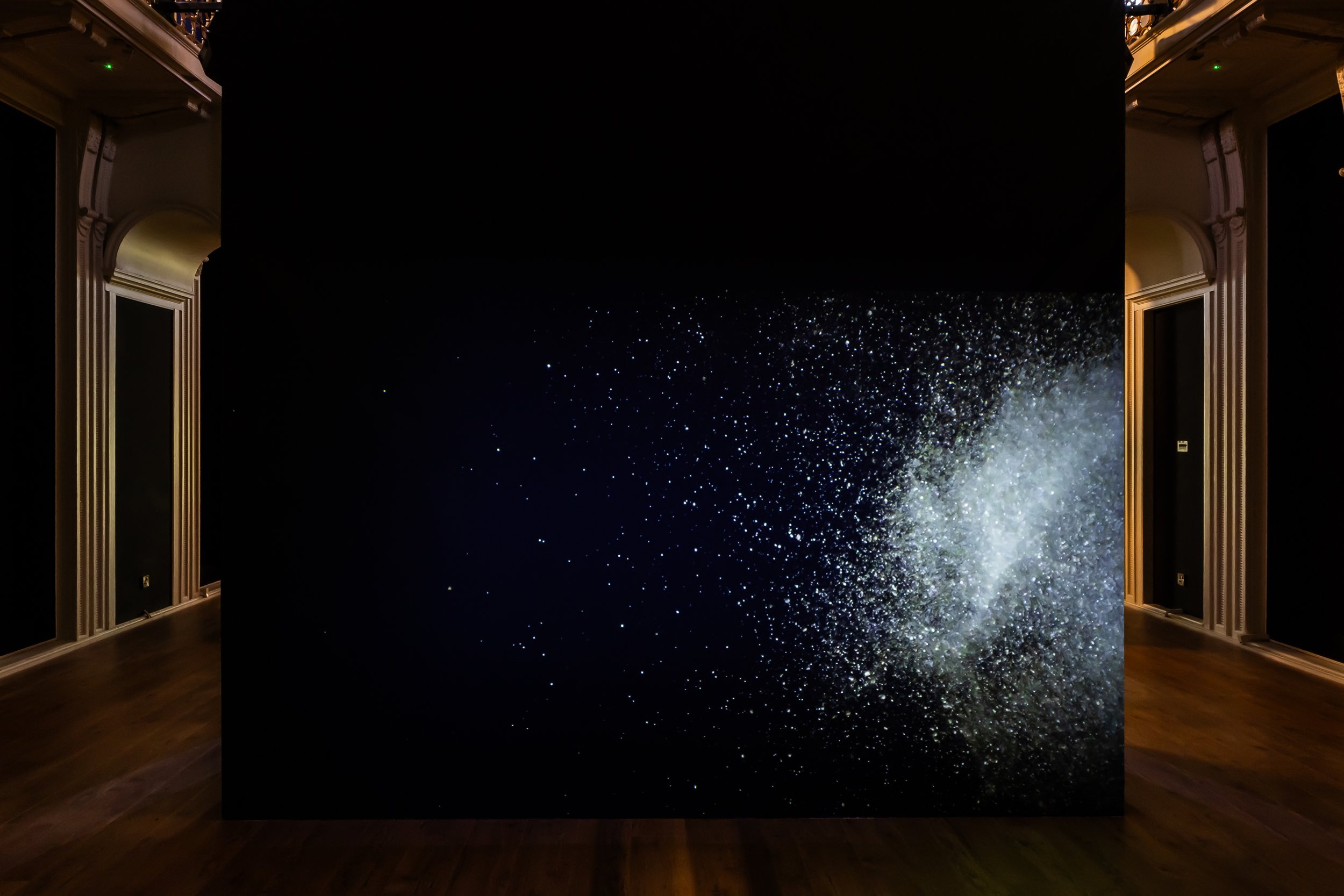
All images courtesy of Talbot Rice Gallery, University of Edinburgh - Photo: Sally Jubb
The Recent Exhibition until 17 Feb 2024








